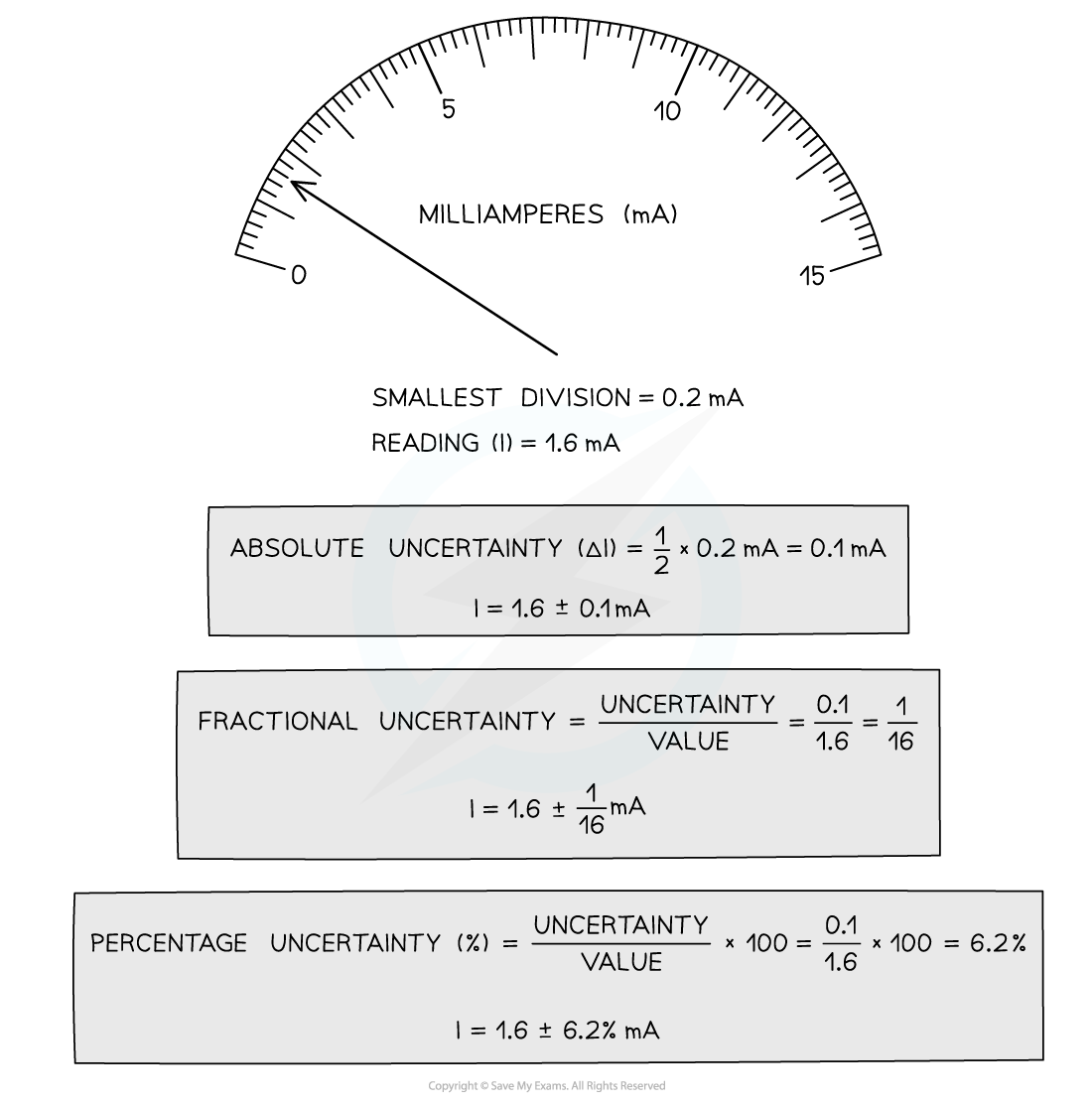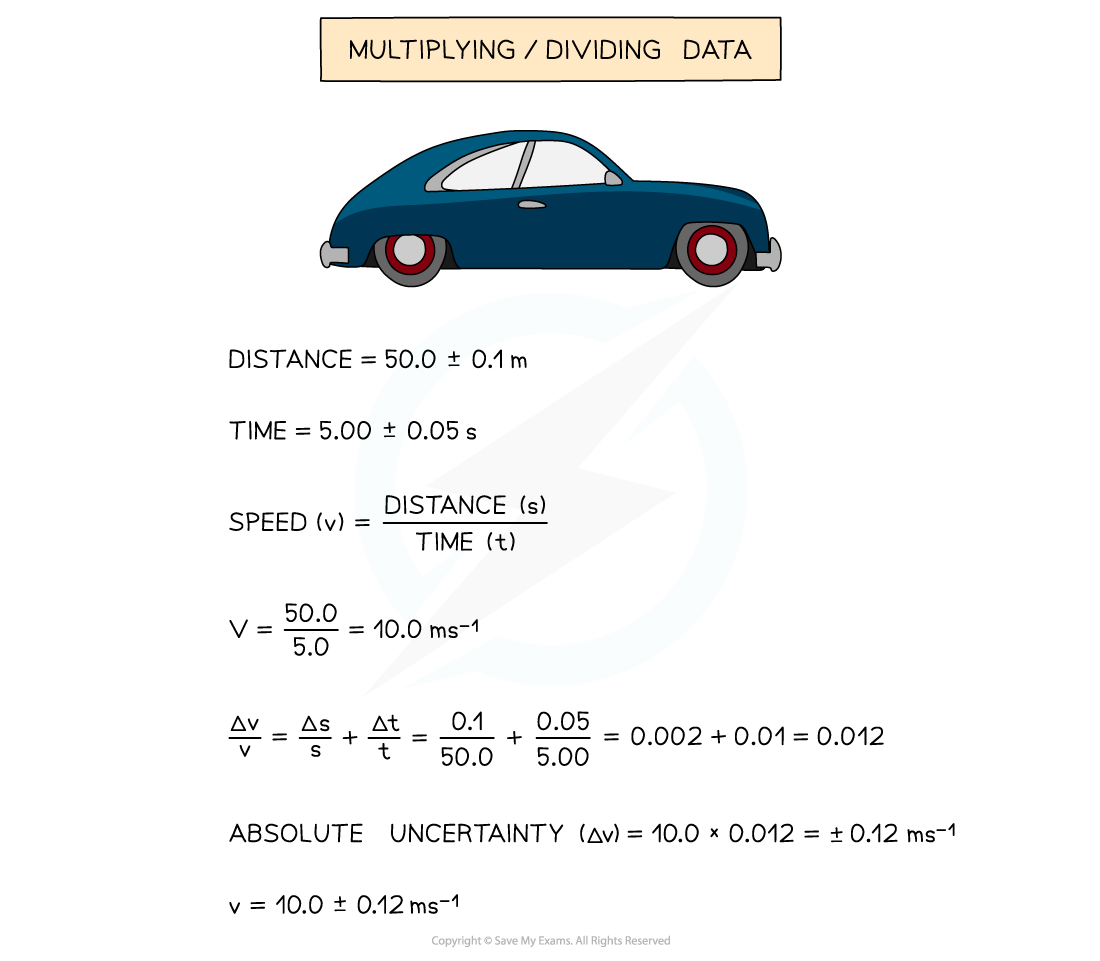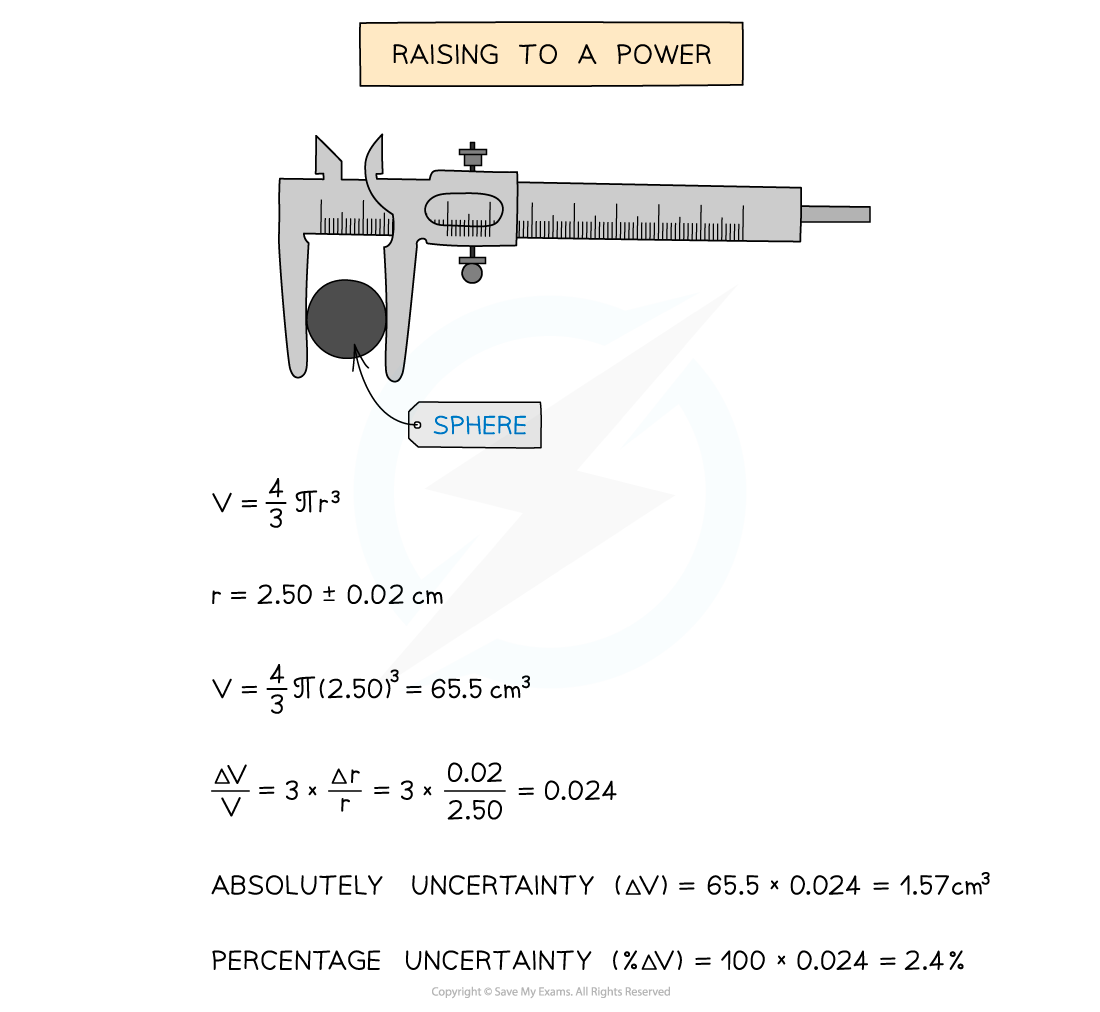Calculating Uncertainties (Cambridge (CIE) A Level Physics): Revision Note
Exam code: 9702
Calculating uncertainty
What is uncertainty?
There is always a degree of uncertainty when measurements are taken; the uncertainty can be thought of as the difference between the actual reading taken (caused by the equipment or techniques used) and the true value
Uncertainties are not the same as errors
Errors can be thought of as issues with equipment or methodology that cause a reading to be different from the true value
The uncertainty is a range of values around a measurement within which the true value is expected to lie, and is an estimate
For example, if the length of a box is measured multiple times as 12.55 cm, 12.45 cm and 12.51 cm, we can say the length is 12.50 cm with an uncertainty of 0.05 cm,
This is often written as 12.50 ± 0.05 cm
Calculating Uncertainty
Uncertainties can be represented in a number of ways:
Absolute Uncertainty: where uncertainty is given as a fixed quantity (as above)
Fractional Uncertainty: where uncertainty is given as a fraction of the measurement
Percentage Uncertainty: where uncertainty is given as a percentage of the measurement
To find uncertainties in different situations:
The uncertainty in a reading (e.g. from a voltmeter): ± half the smallest division
The uncertainty in a measurement (e.g. from a ruler): at least ±1 smallest division
The uncertainty in repeated data: half the range i.e. ± ½ (largest - smallest value)
The uncertainty in digital readings: ± the last significant digit unless otherwise quoted
Diagram showing a reading from an ammeter

Combining uncertainties
When combining two measurements that both have uncertainties, the uncertainties have to be combined too
Adding or subtracting data
When adding or subtracting two values with uncertainties, just add the absolute uncertainties
Adding or subtracting data example

Multiplying or dividing data
When multiplying or dividing measurements with uncertainties, add their percentage uncertainties
Multiplying or dividing data example

When the measurement is raised to a power, multiply the fractional or percentage uncertainty by the power
Raising to a power example


Unlock more, it's free!
Did this page help you?